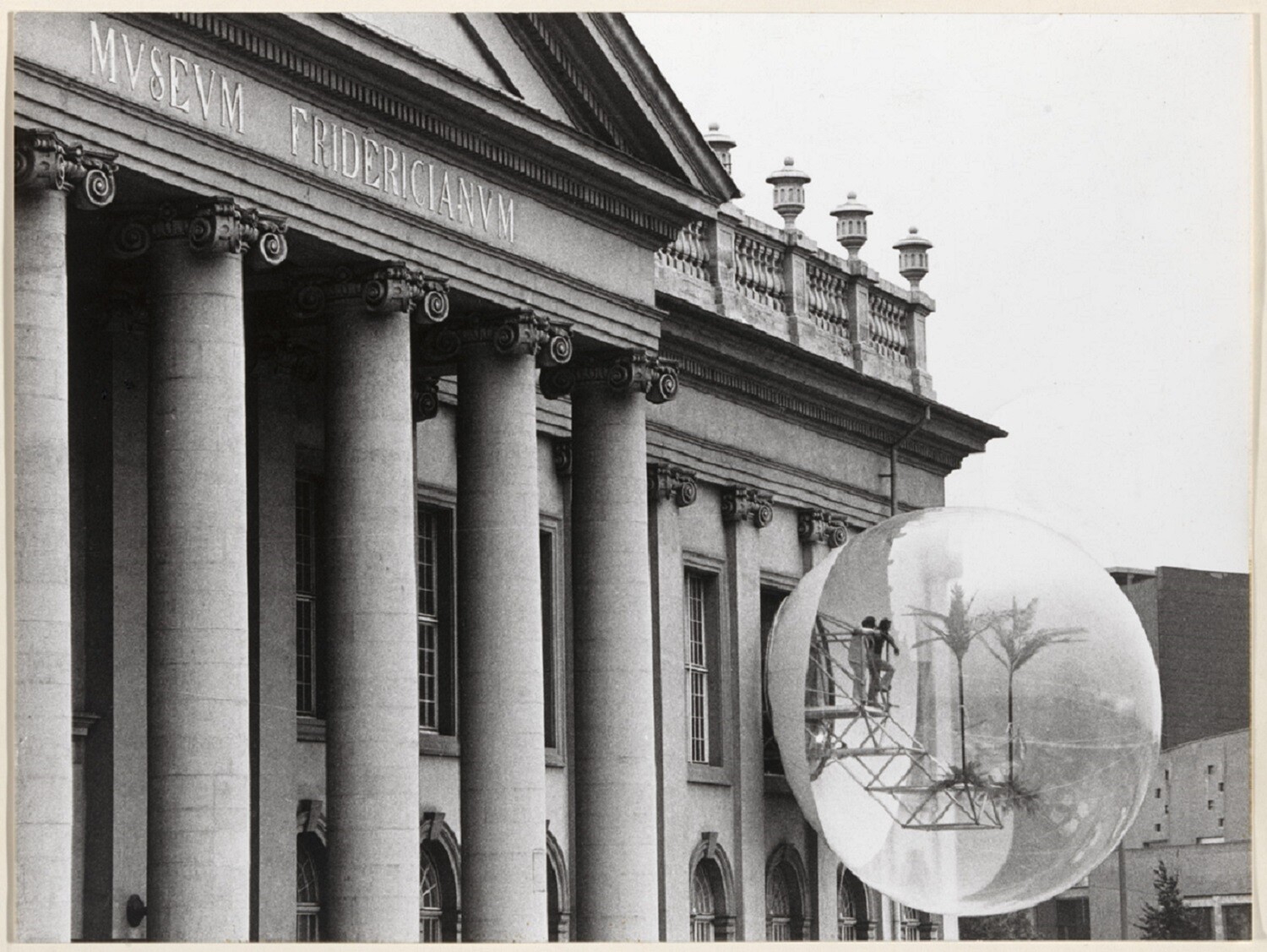Bauhaus and Beyond
Reuse, Renew, Recycle: Recent Architecture from China
November 16, 2021–July 4, 2022
11 West 53rd Street
New York, NY 10019
USA
T +1 212 708 9400
As the Museum builds toward a broader, more expansive view of modern and contemporary art, the collection changes. Each spring and fall, along with ongoing swaps throughout the year, we reveal major new presentations to bring artwork together in different combinations, exploring new artists and ideas.
For the 2021 Fall Reveal we’ve mixed more than 350 new works into our collection displays on floors 2, 4, and 5. Specifically for architecture and design, we are presenting the newly conceptualized installations in galleries 417 and 519:
Transparency in Architecture and Beyond (Gallery 417) prominently features a floor-to-ceiling fragment of the United Nations Secretariat Building in New York, one of the first realizations of the ideal of a fully transparent architecture. As the Secretariat Building rose on the East edge of Manhattan in 1950, it was meant to communicate the aspiration of a transparent institution, an intergovernmental organization that would be guided by ethical principles and unafraid to “expose” its inner workings.
Architects—such as Lucio Costa, Le Corbusier, and Oscar Niemeyer in their Ministry of Education and Health (1937–42) in Rio de Janeiro—engaged with the aesthetic potentials and symbolic pitfalls of transparency throughout the 20th century. Acutely aware of the loss of privacy that glass buildings brought about, artists—among them Elizabeth Diller + Ricardo Scofidio, Haus-Rucker-Co, and Dan Graham—investigated the sense of voyeurism and the threat of all-encompassing surveillance of the individual. Using transparency as a metaphor, they uncovered hidden power structures and demanded accountability from institutions—from privately owned museums to multinational corporations.
Bauhaus and Beyond (Gallery 519) presents works produced at the German school of art and design during the fourteen years of its existence, alongside objects by former Bauhäusler created across multiple geographies in the decades that followed its premature dissolution. Many of the works on view are recent acquisitions and on view for the first time. Walter Gropius, the founder of the Bauhaus, described the school’s curriculum as “a reunion between creative arts and the industrial world.” Conceived as a laboratory for radical artistic experimentation, students who excelled in the school’s preliminary course, or Vorkurs, went on to join workshops in ceramics, metalwork, cabinetmaking, weaving, and typography, among others. Following this interdisciplinary spirit, the exhibition brings into dialogue artworks by Bauhaus faculty such as Paul Klee, and Lázló Moholy-Nagy, with design objects by figures such as Marianne Brandt, Marcel Breuer, Grete Heymann Loebenstein Marks, or Marguerite Wildenhein.
After the Bauhaus closed in 1933 its legacy continued abroad, as teachers and students, fleeing political persecution, found opportunities elsewhere in Europe and in North and South America. Objects produced by Bauhaus emigrés to the United Kingdom, Switzerland, the United States, and Mexico, alongside works by artists and designers influenced by Bauhaus principles, are featured in this display. Highlights include Clara Porset’s Butaque Chair, a recent acquisition and a rarely exhibited model of Mies van der Rohe’s Resor House project, interwoven with artworks by Bauhaus proponents, such as Irene Rice Pereira’s painting White Lines.
In addition, Reuse, Renew, Recycle: Recent Architecture from China continues to be on view in the Streetfront Gallery on the Museum’s ground floor:
During the past three decades, China has undergone a building boom that has made it the largest construction site in human history. After years of urban megaprojects and spectacular architectural objects, many of which were designed by Western firms, a new generation of independent Chinese architects have challenged this approach. This exhibition highlights their commitment to social and environmental sustainability. The exhibition presents eight projects that speak to a multiplicity of architectural approaches—from the reuse of former industrial buildings, the recycling of building materials, and the reinterpretation of ancient construction techniques, to the economic rejuvenation of rural villages and entire regions.



